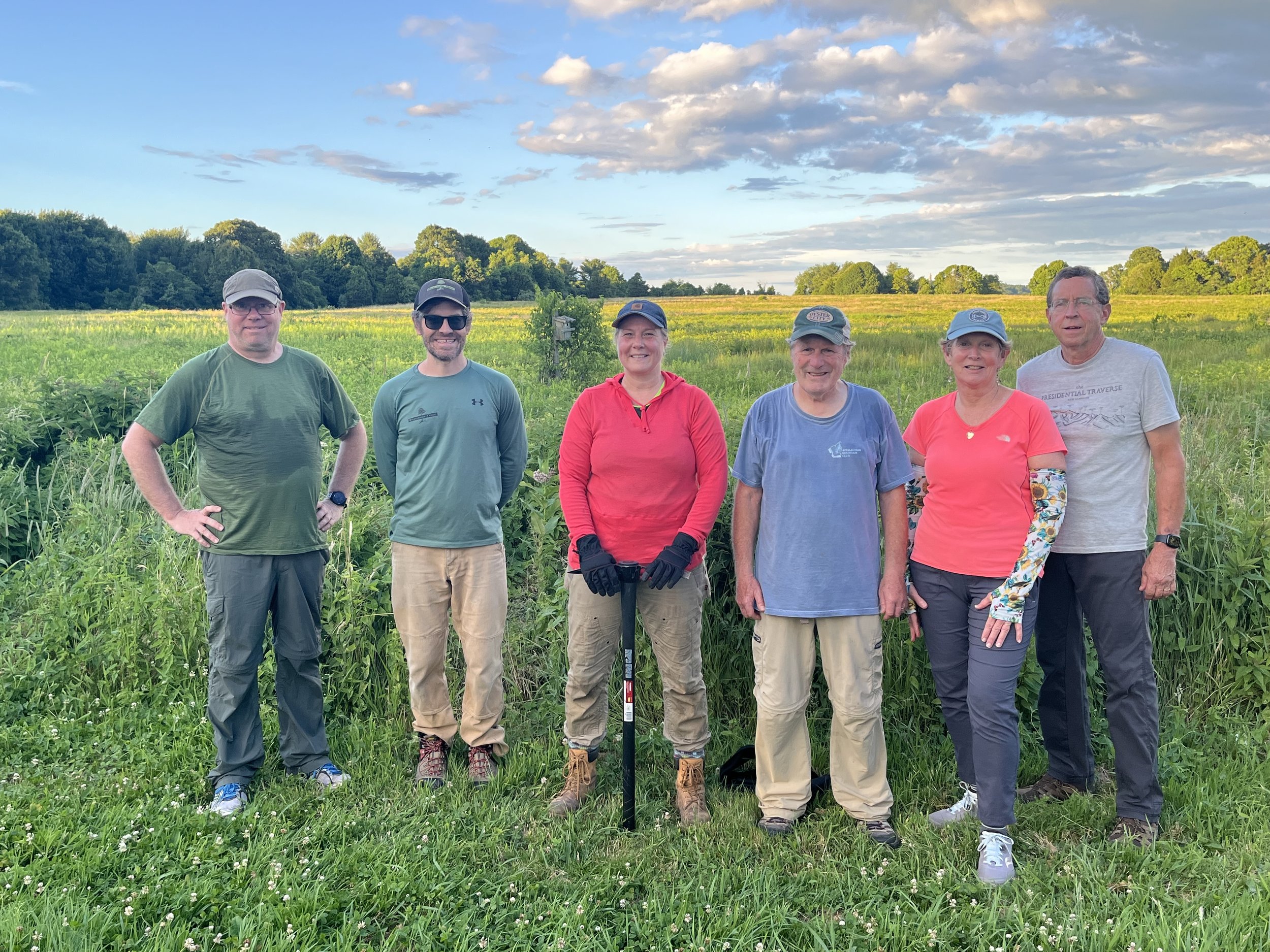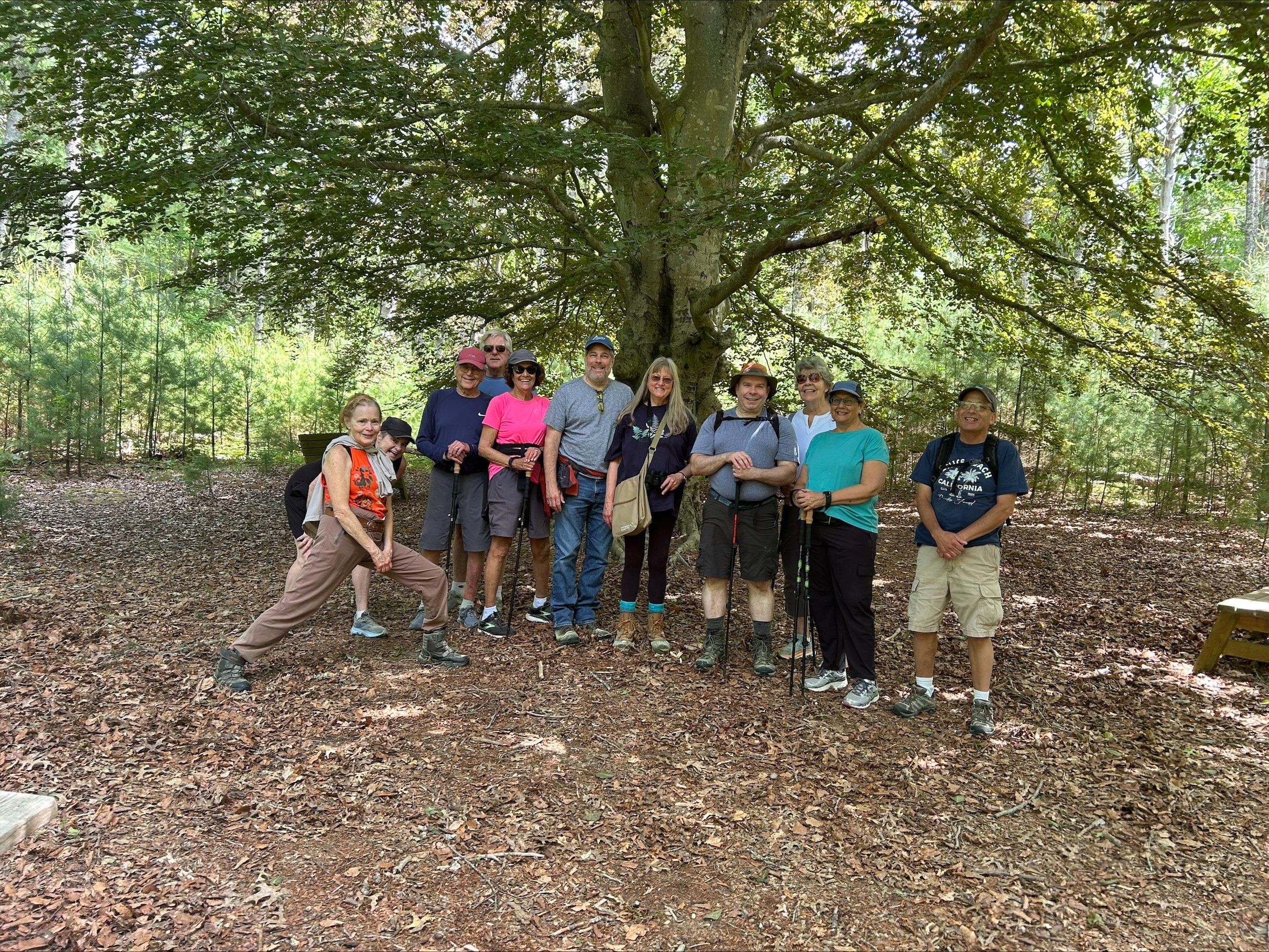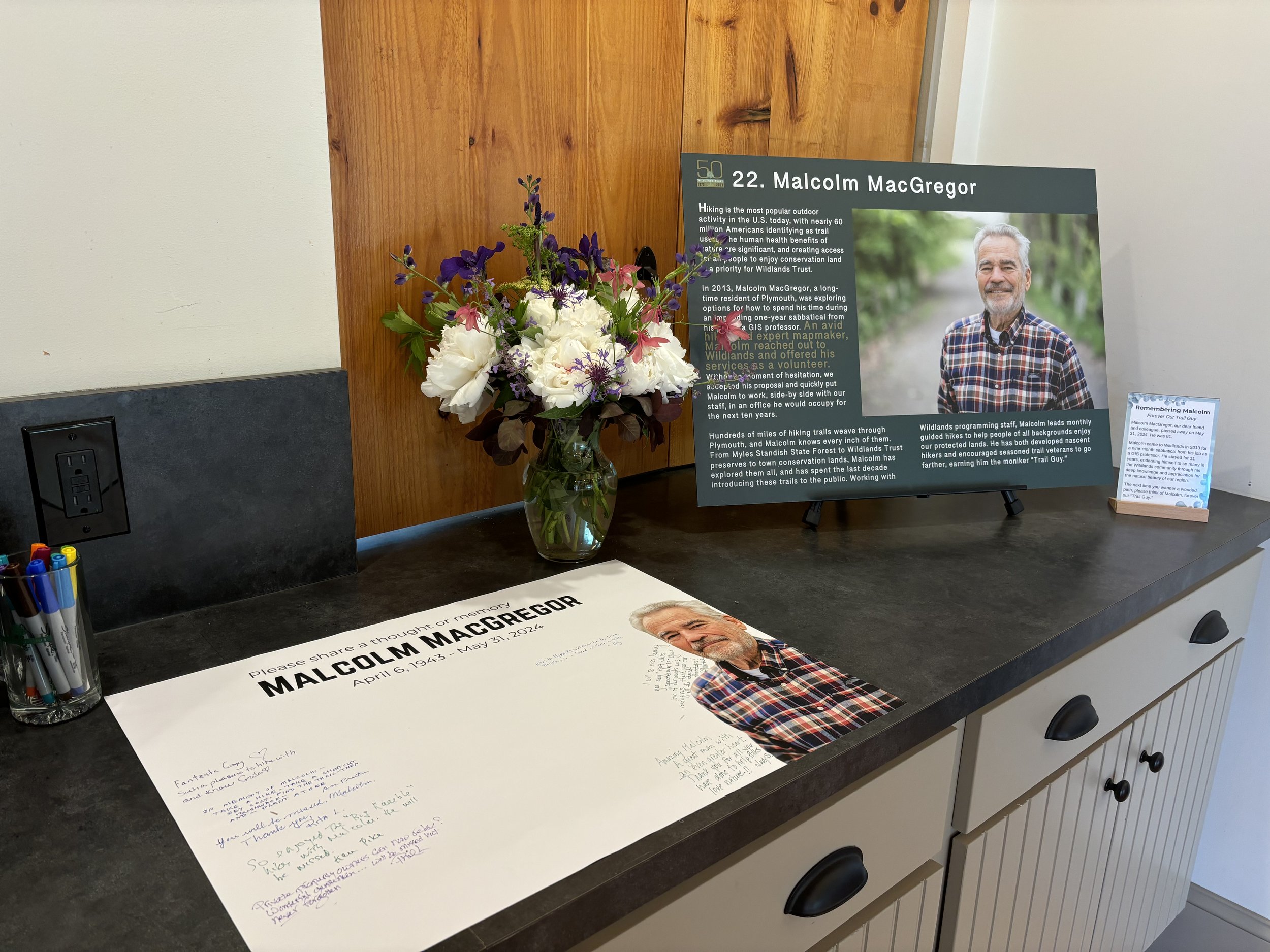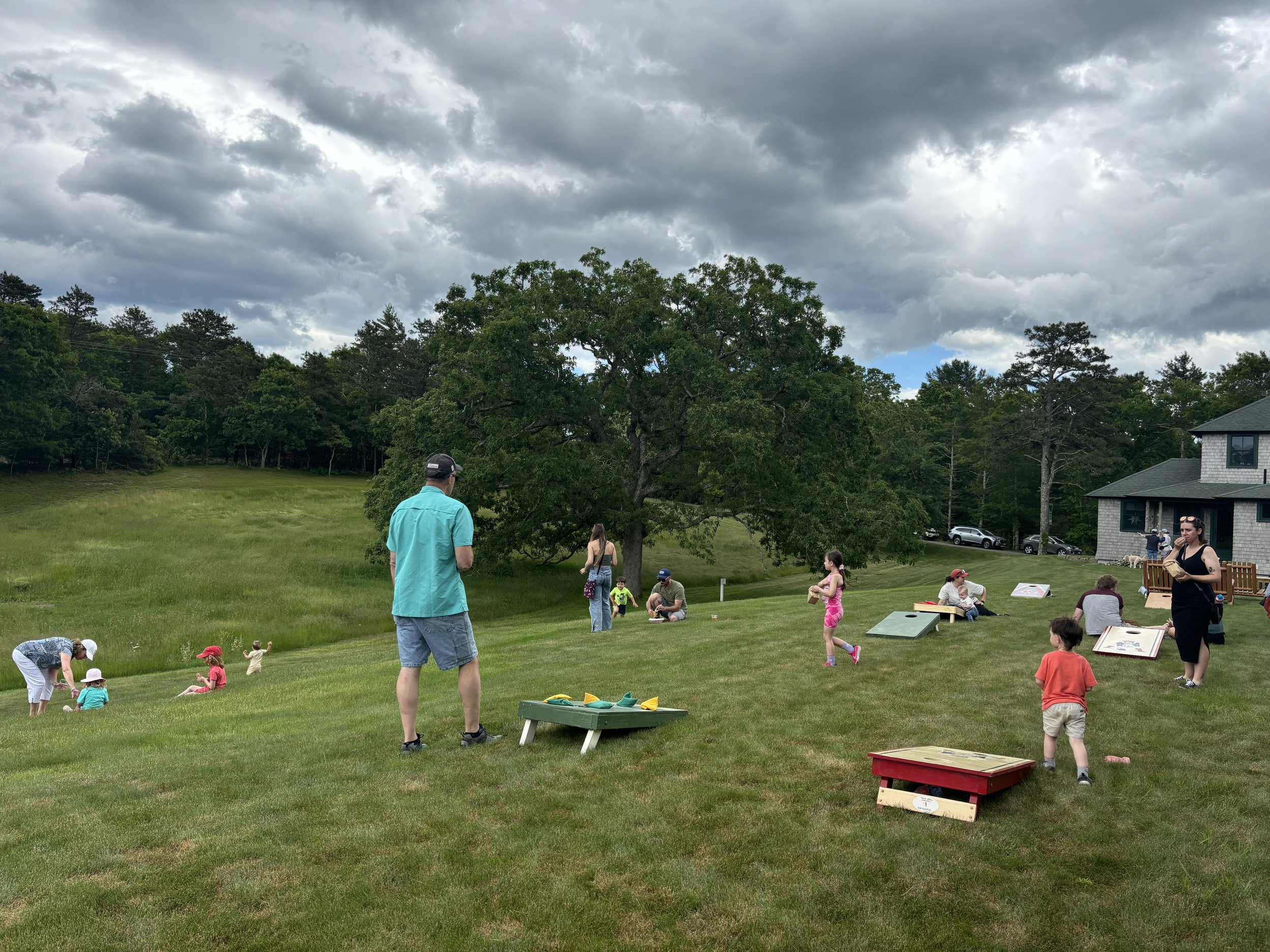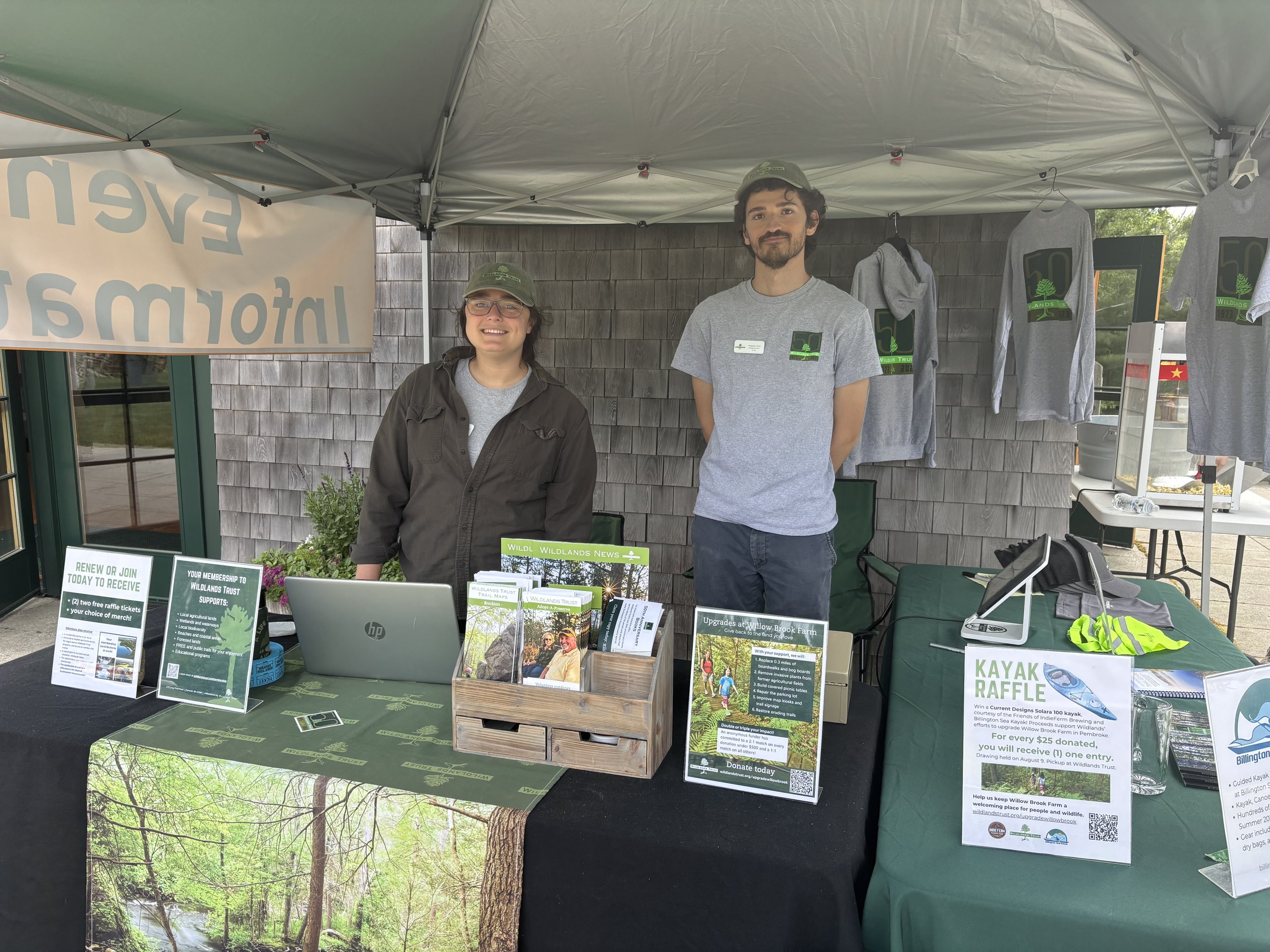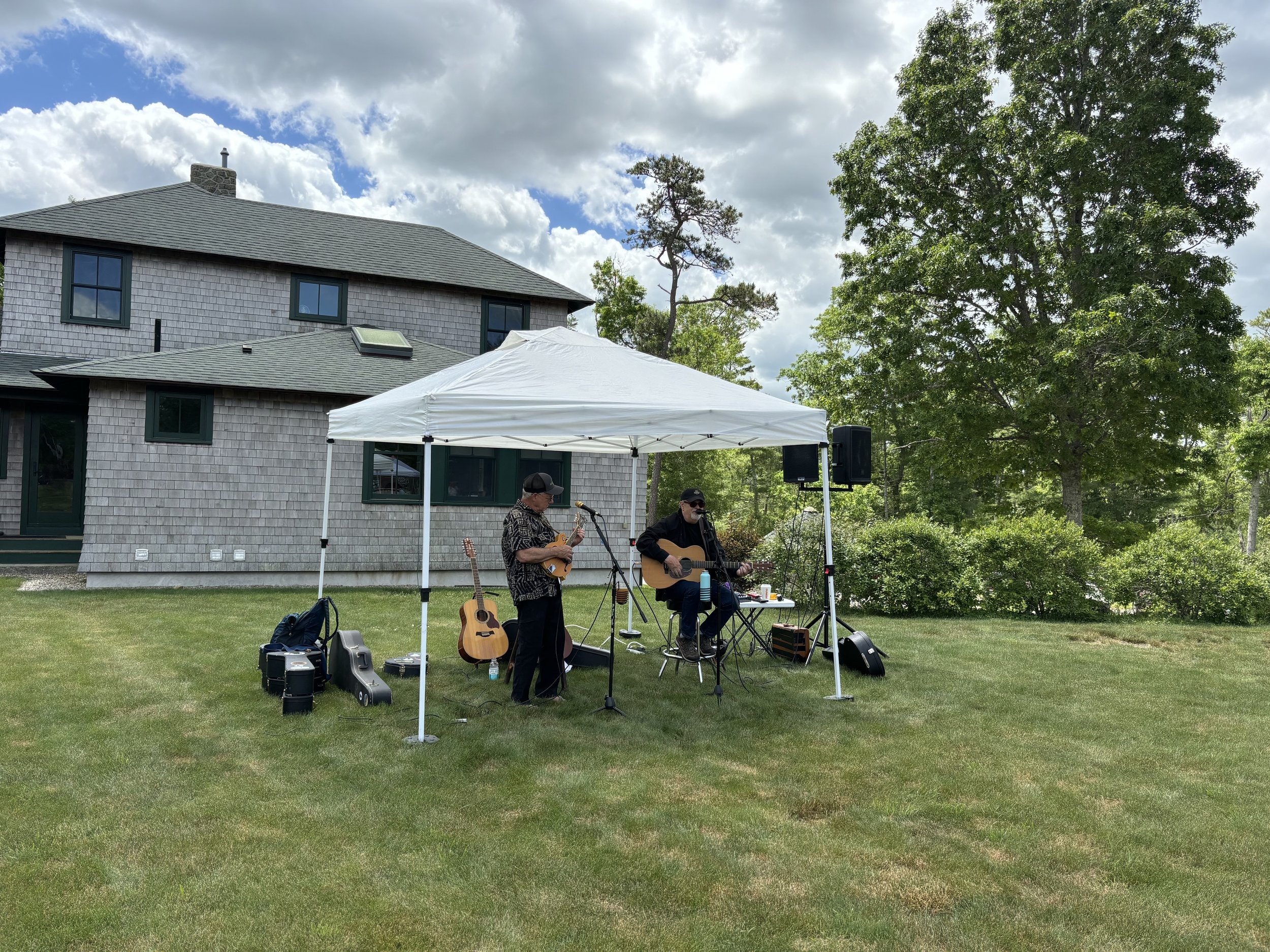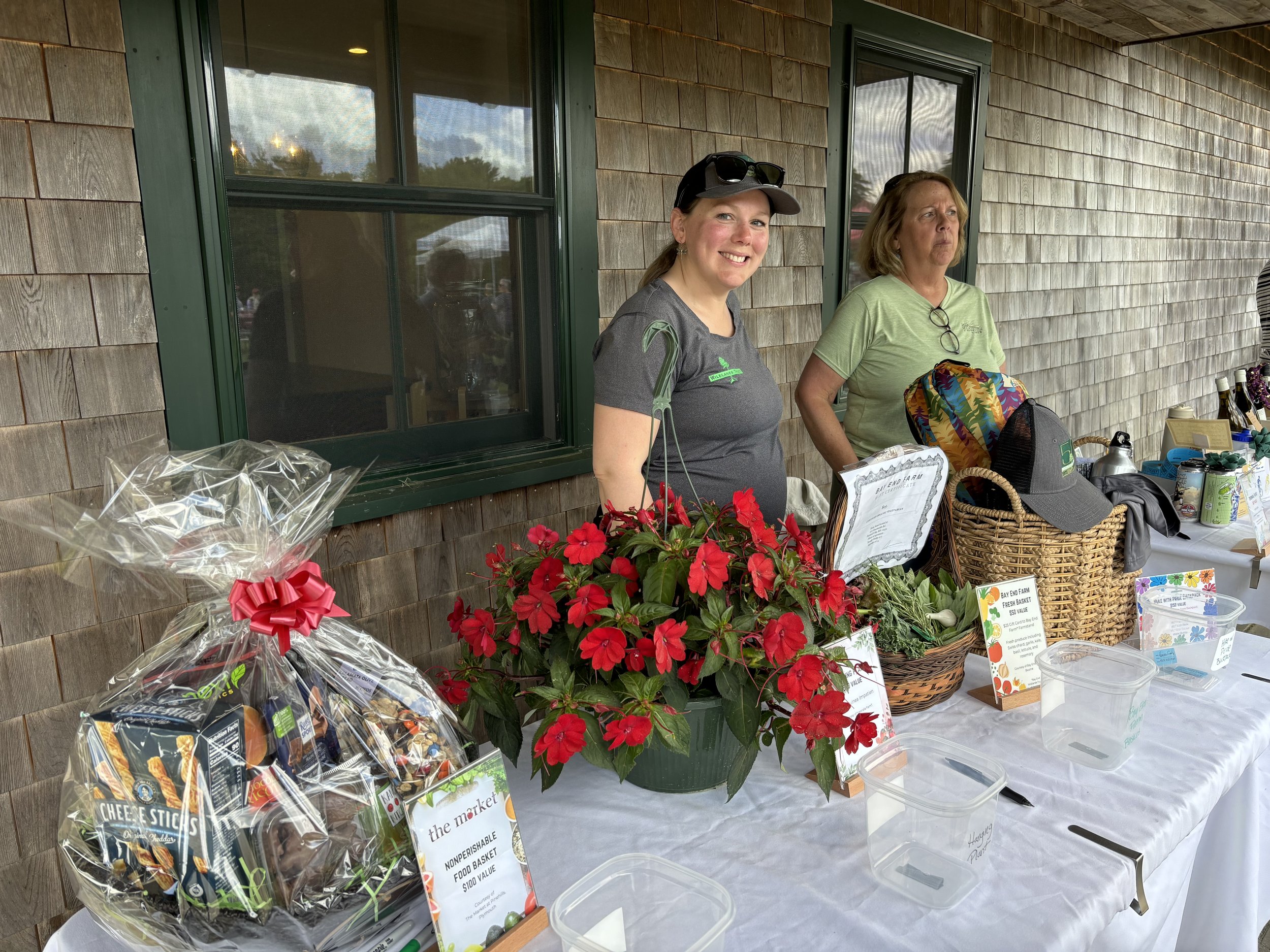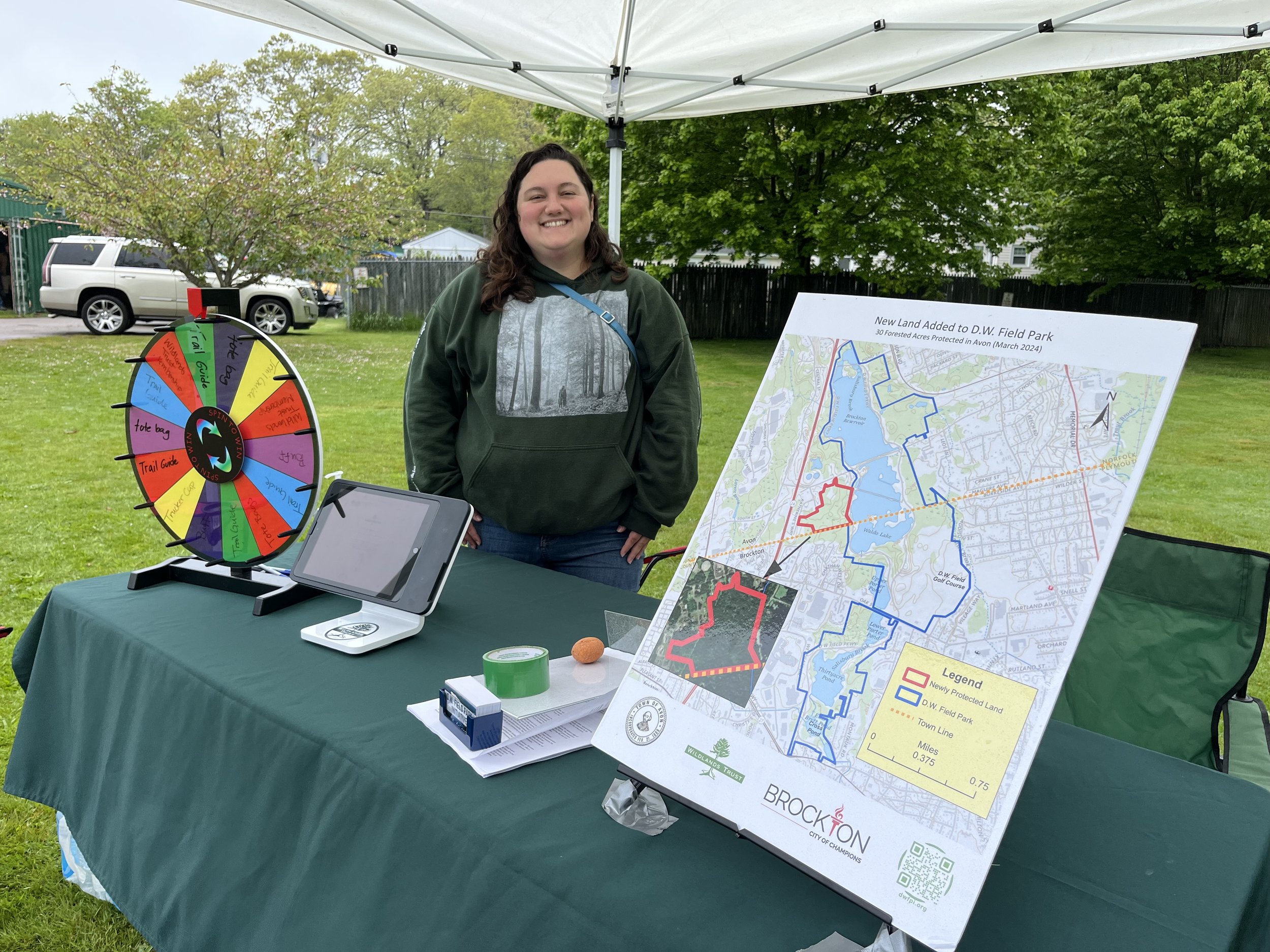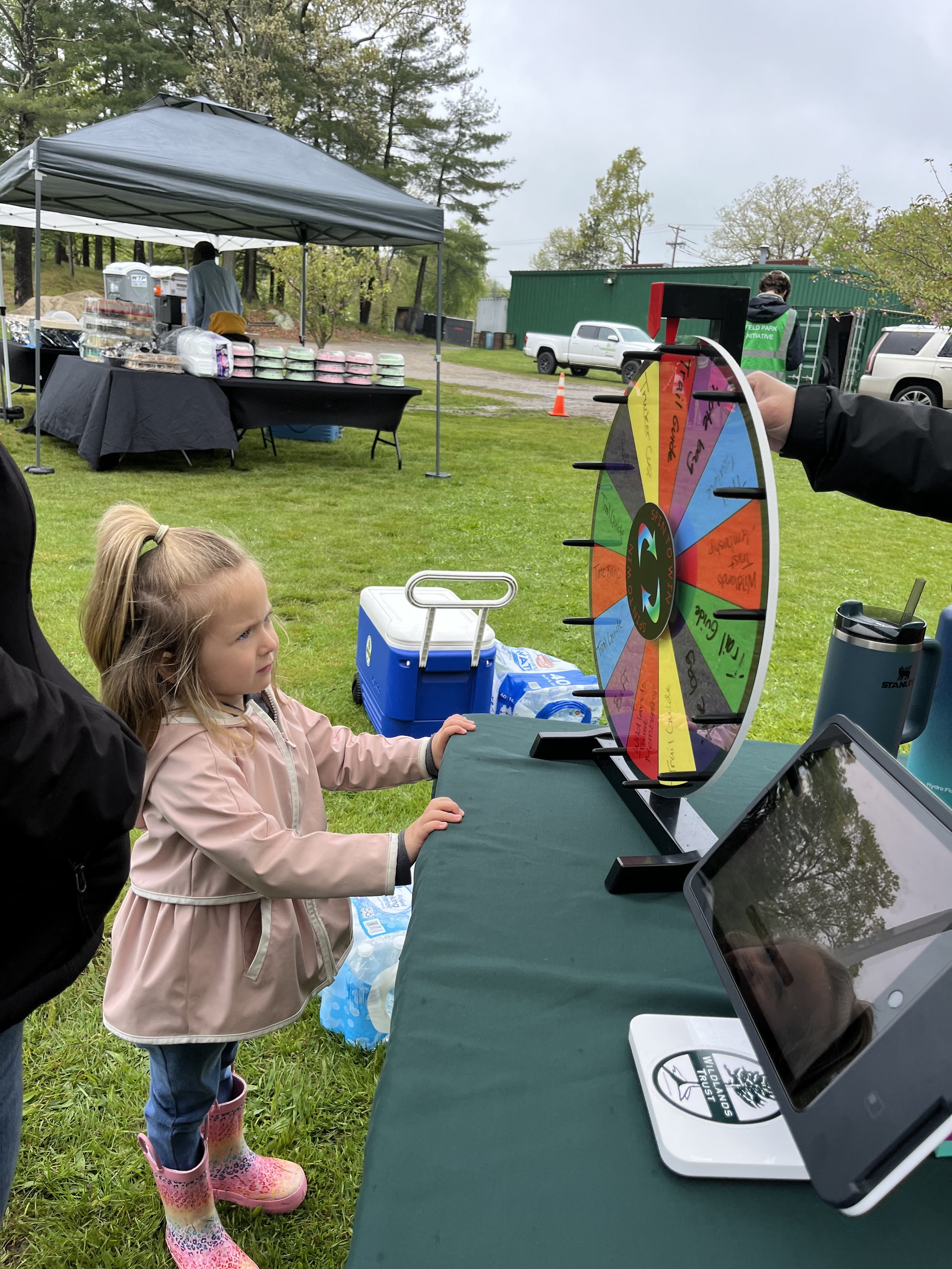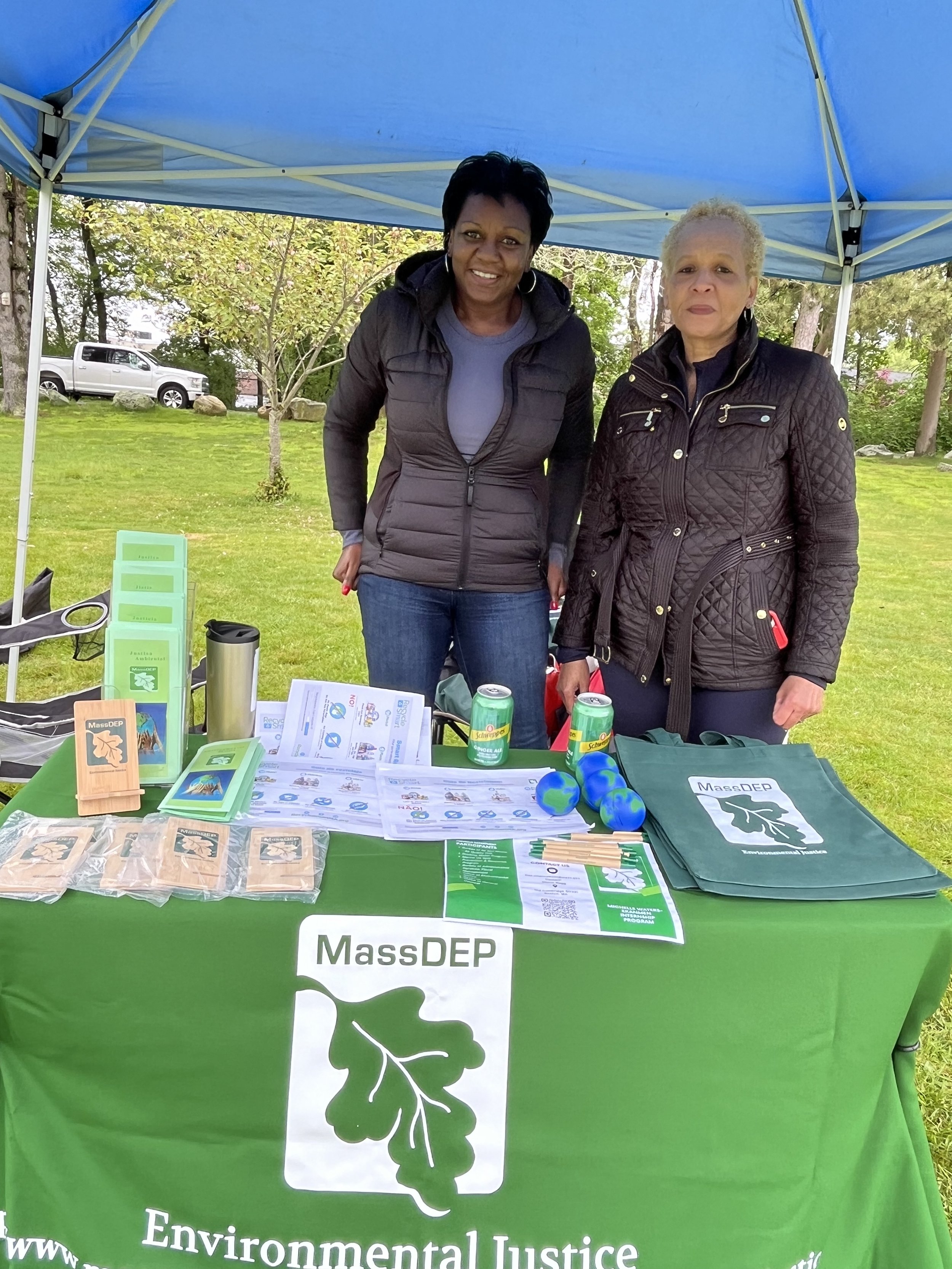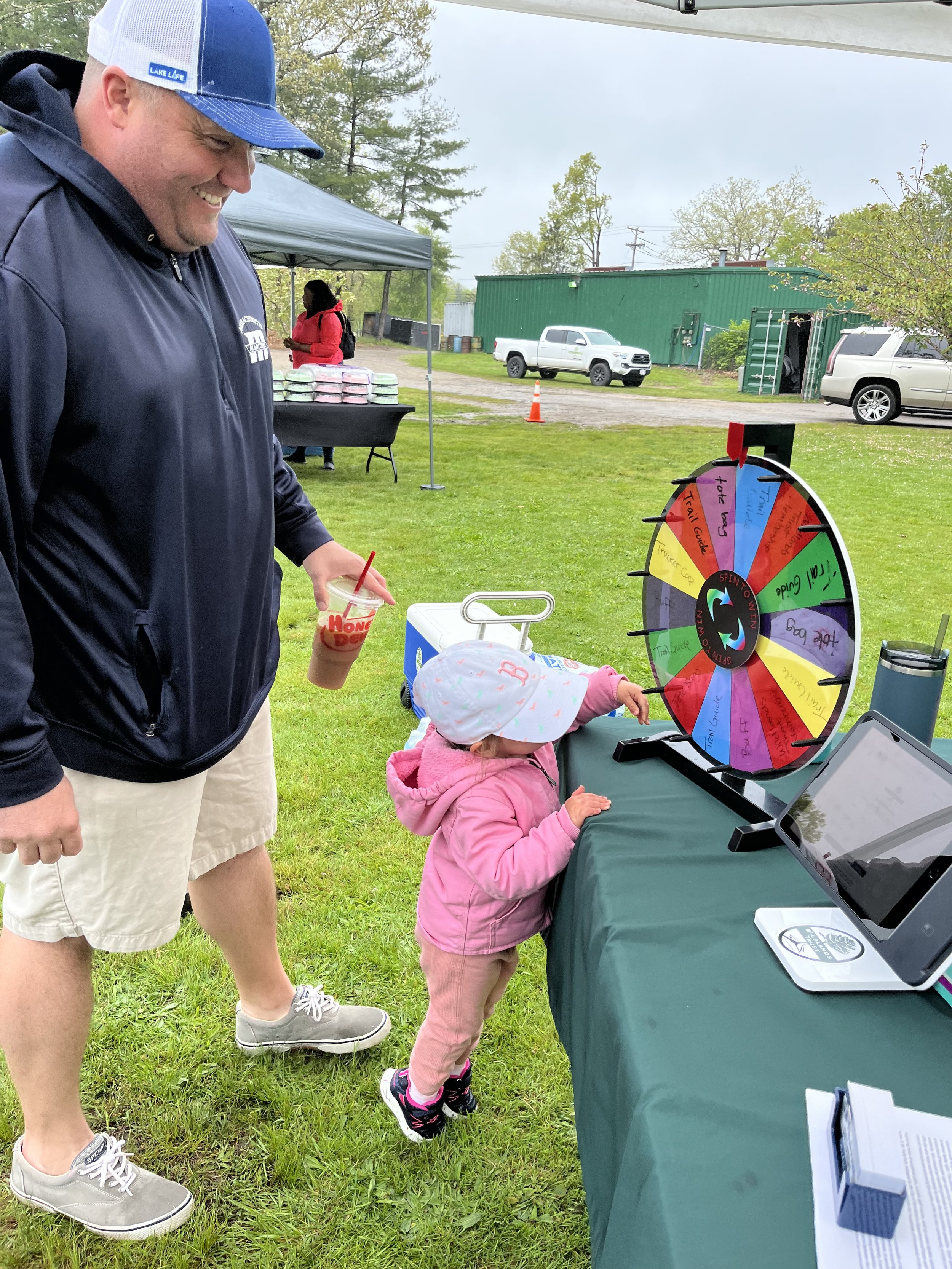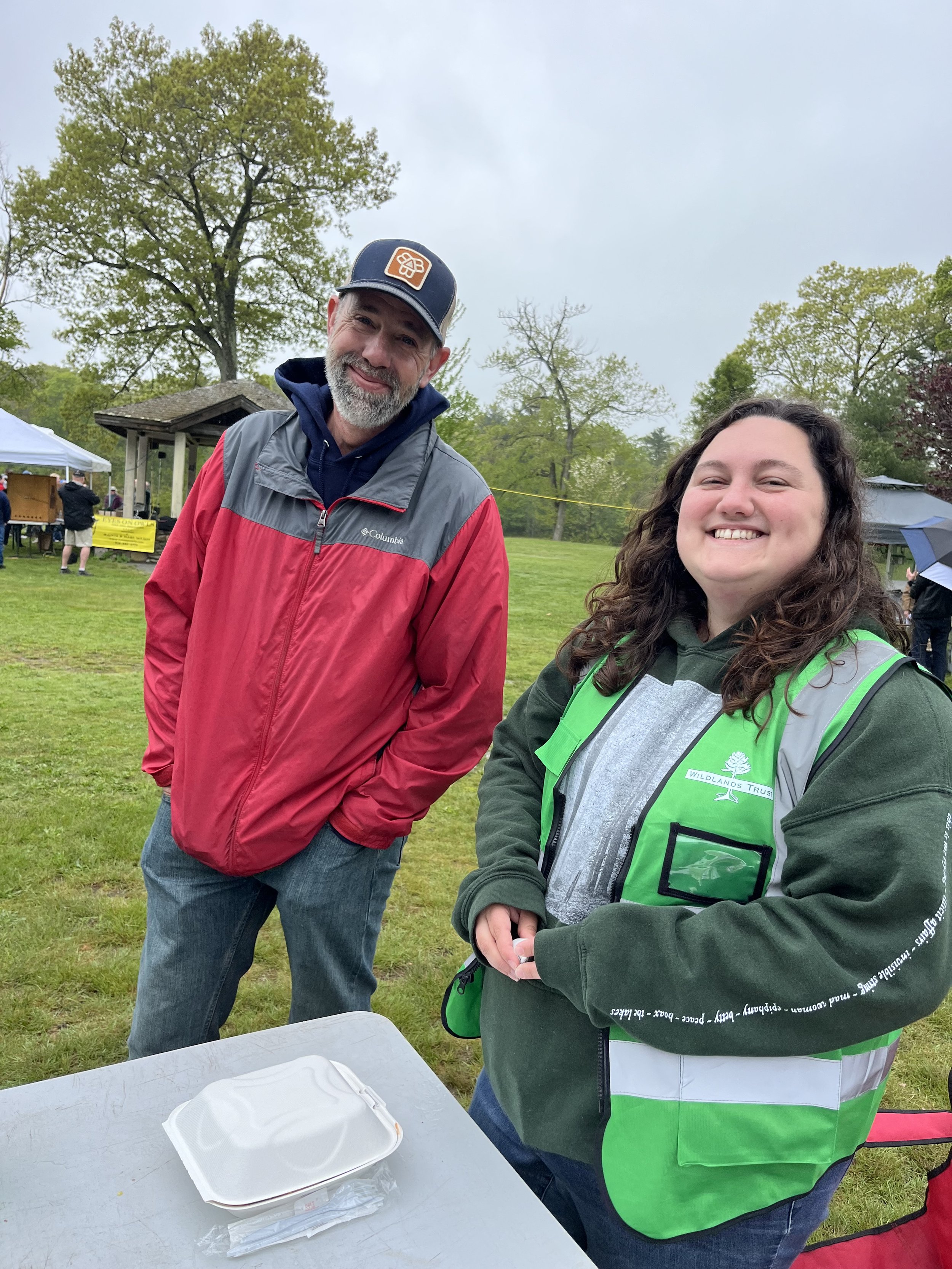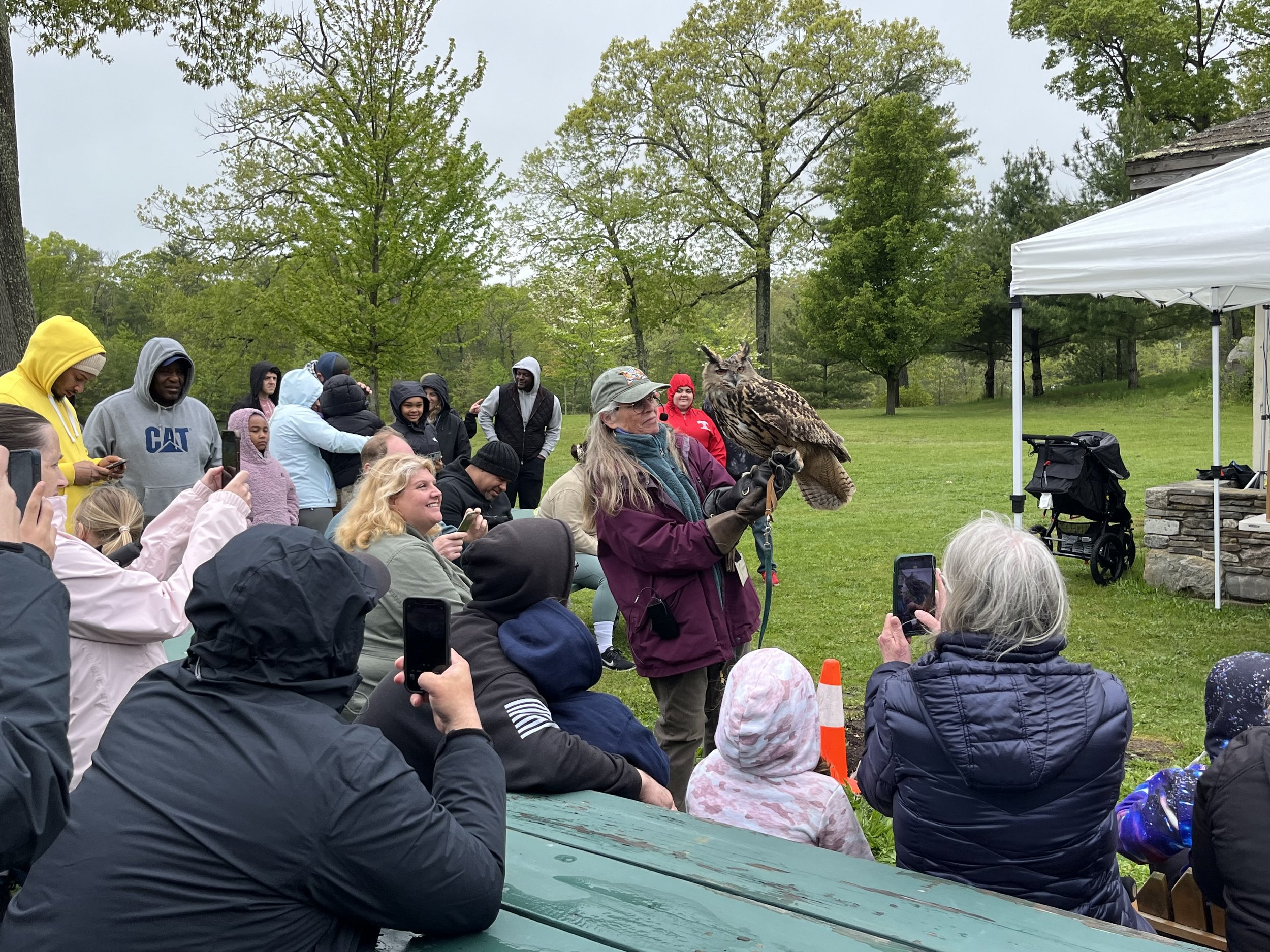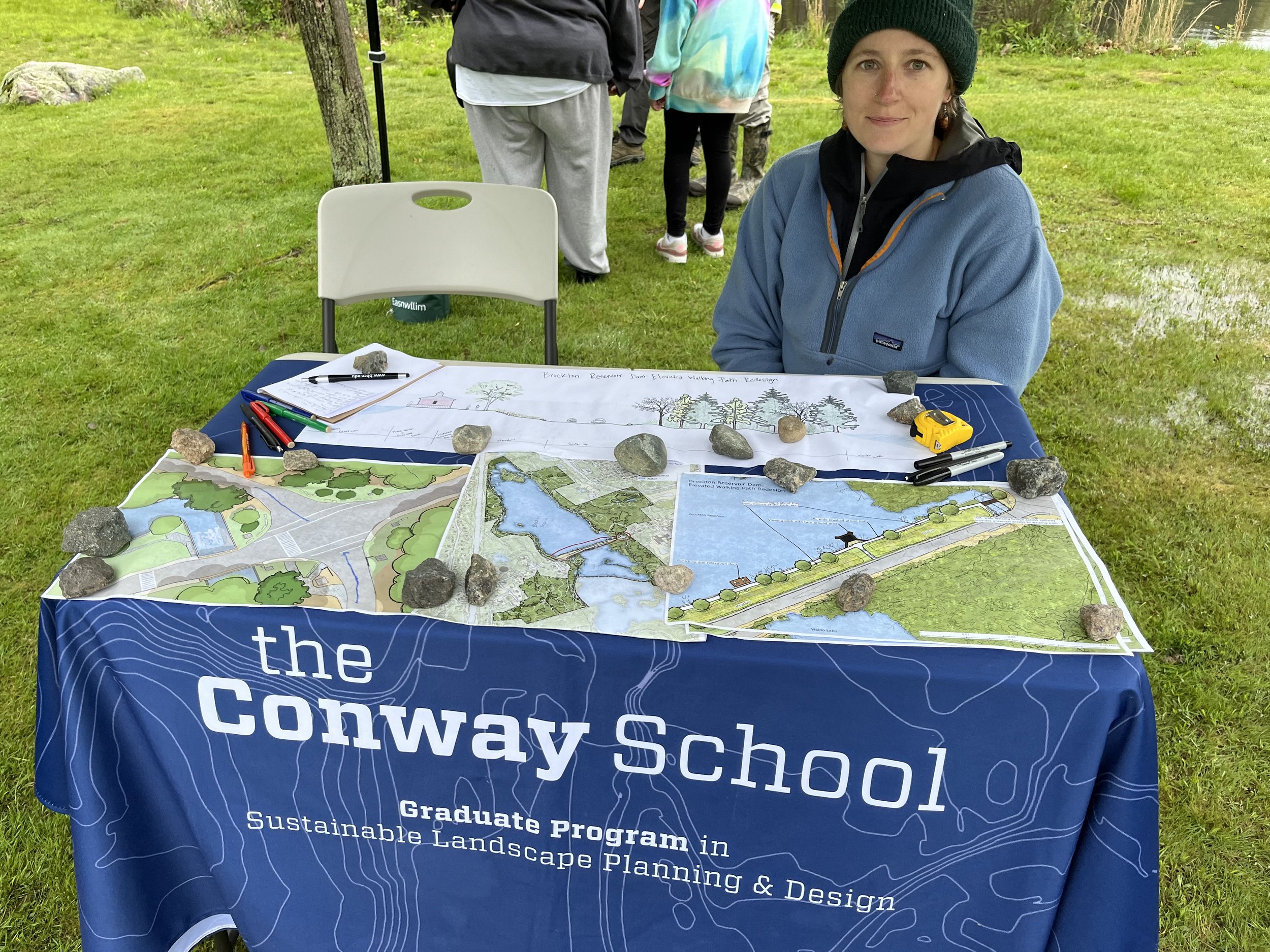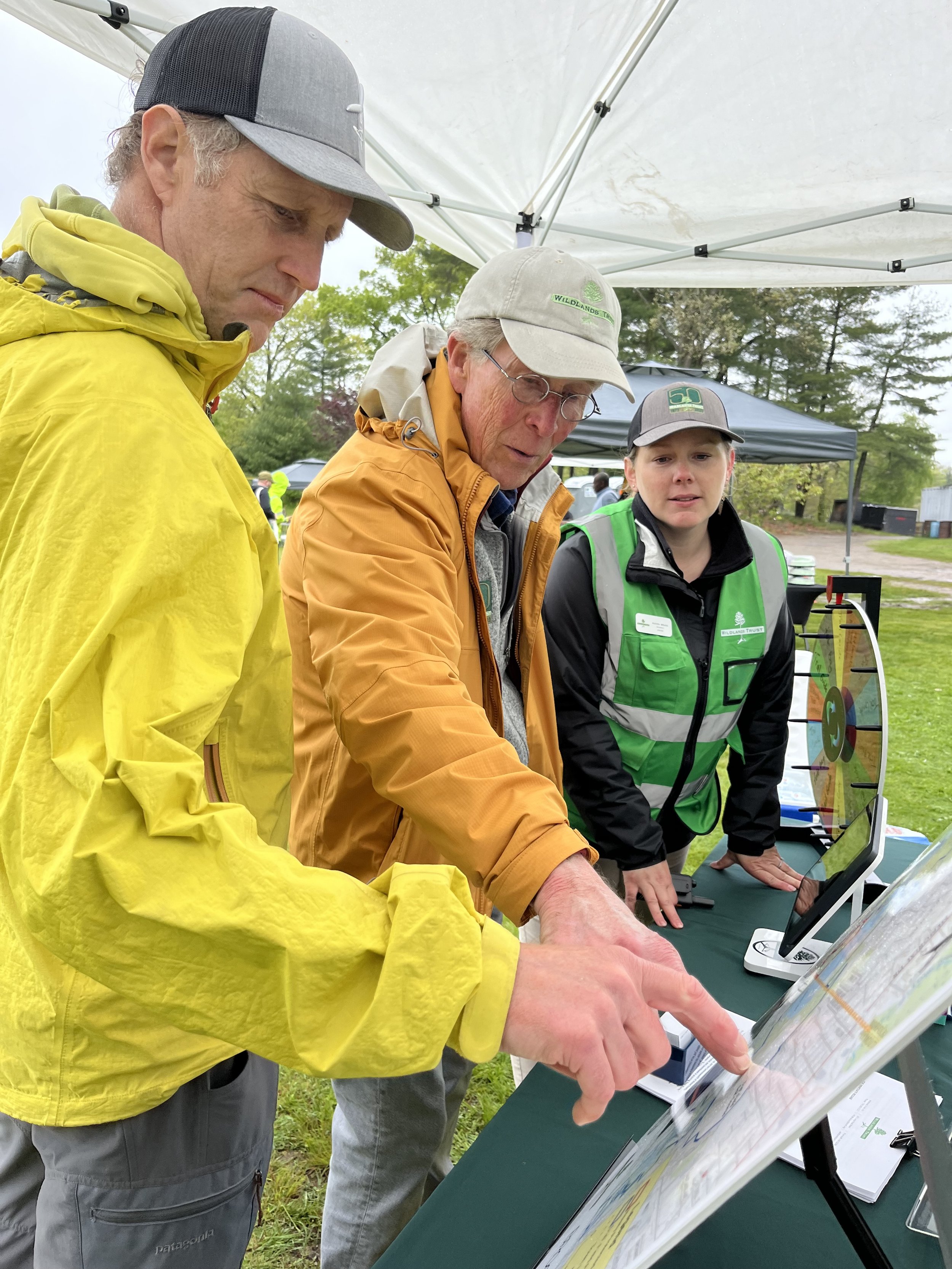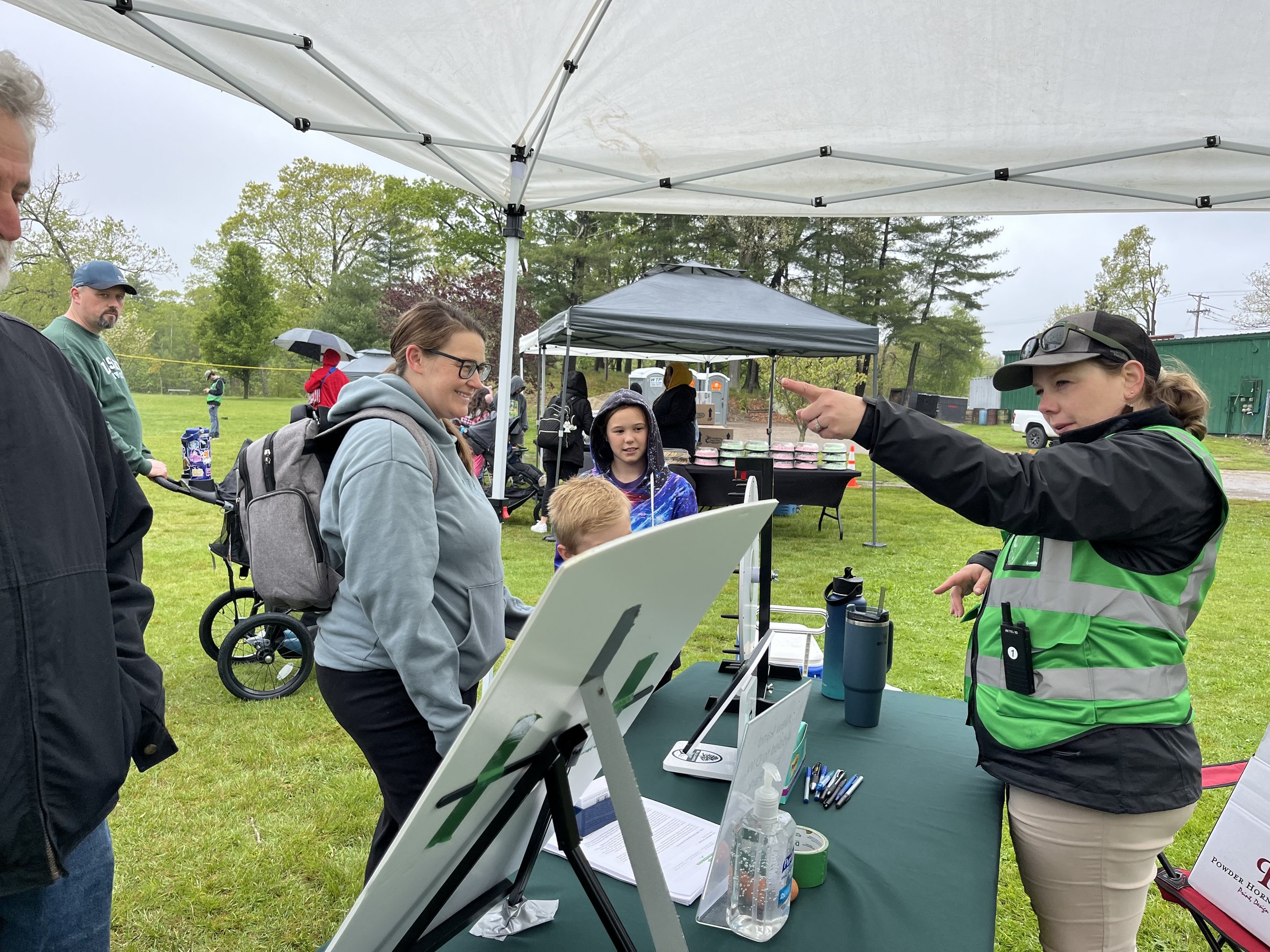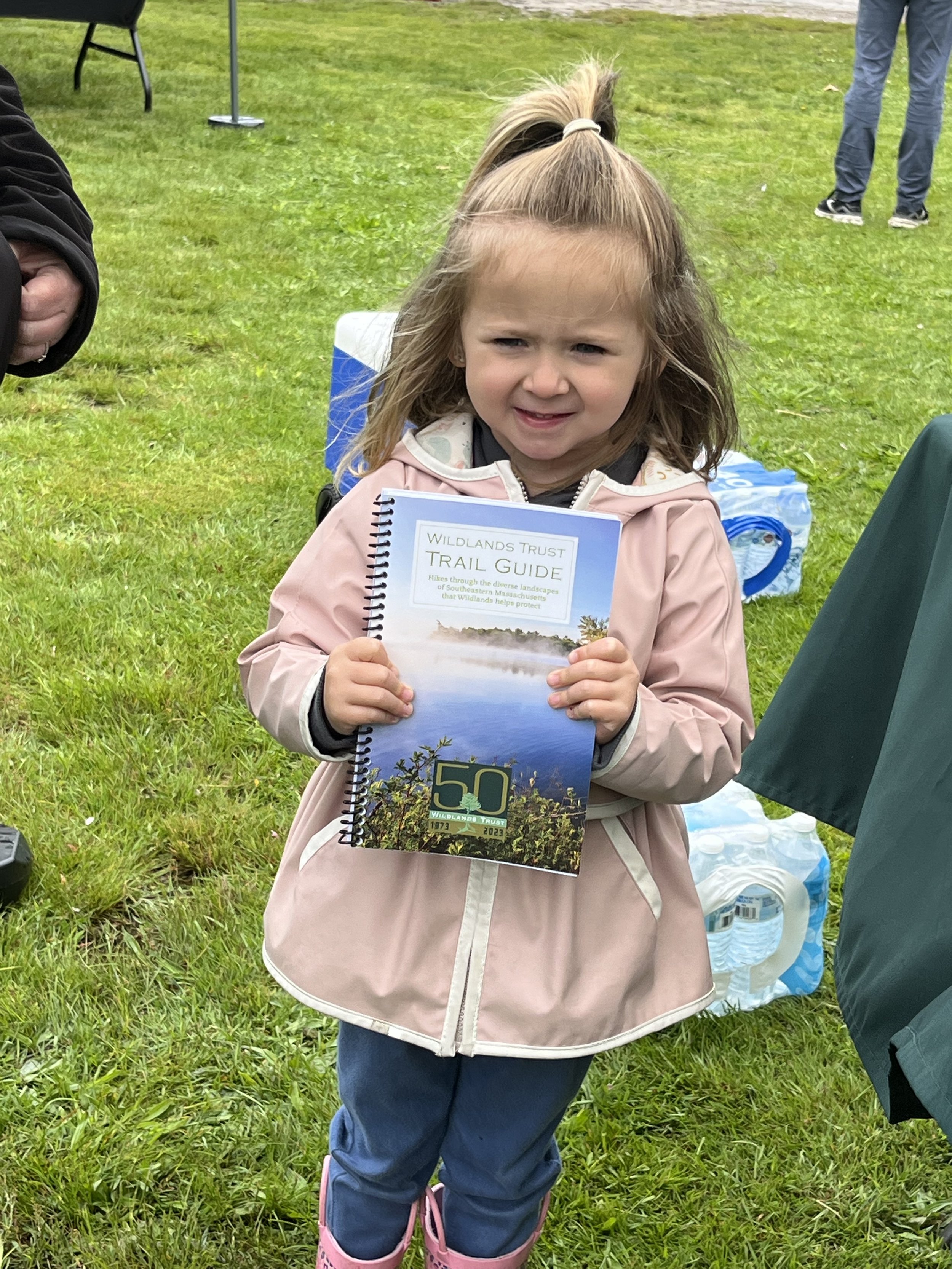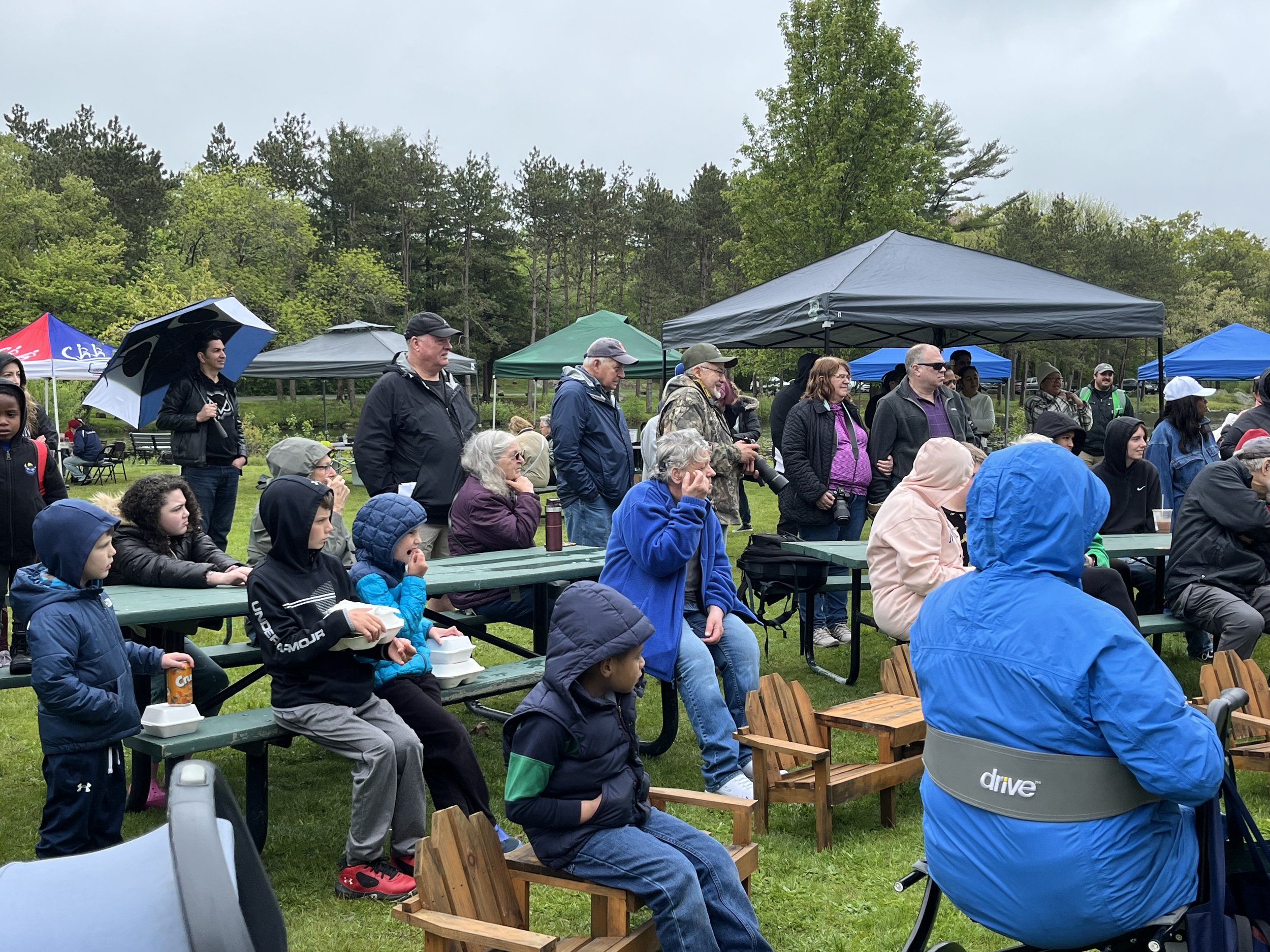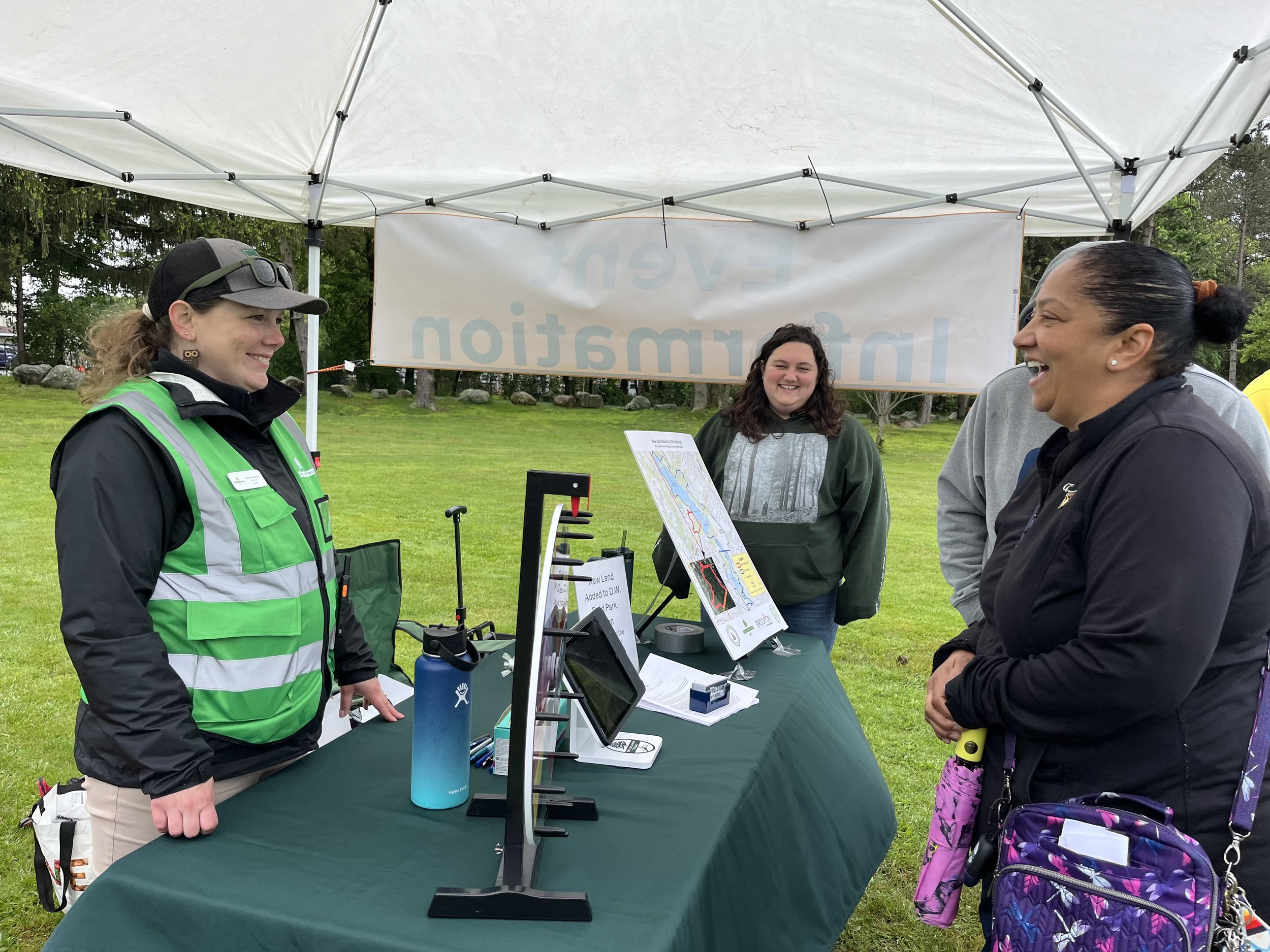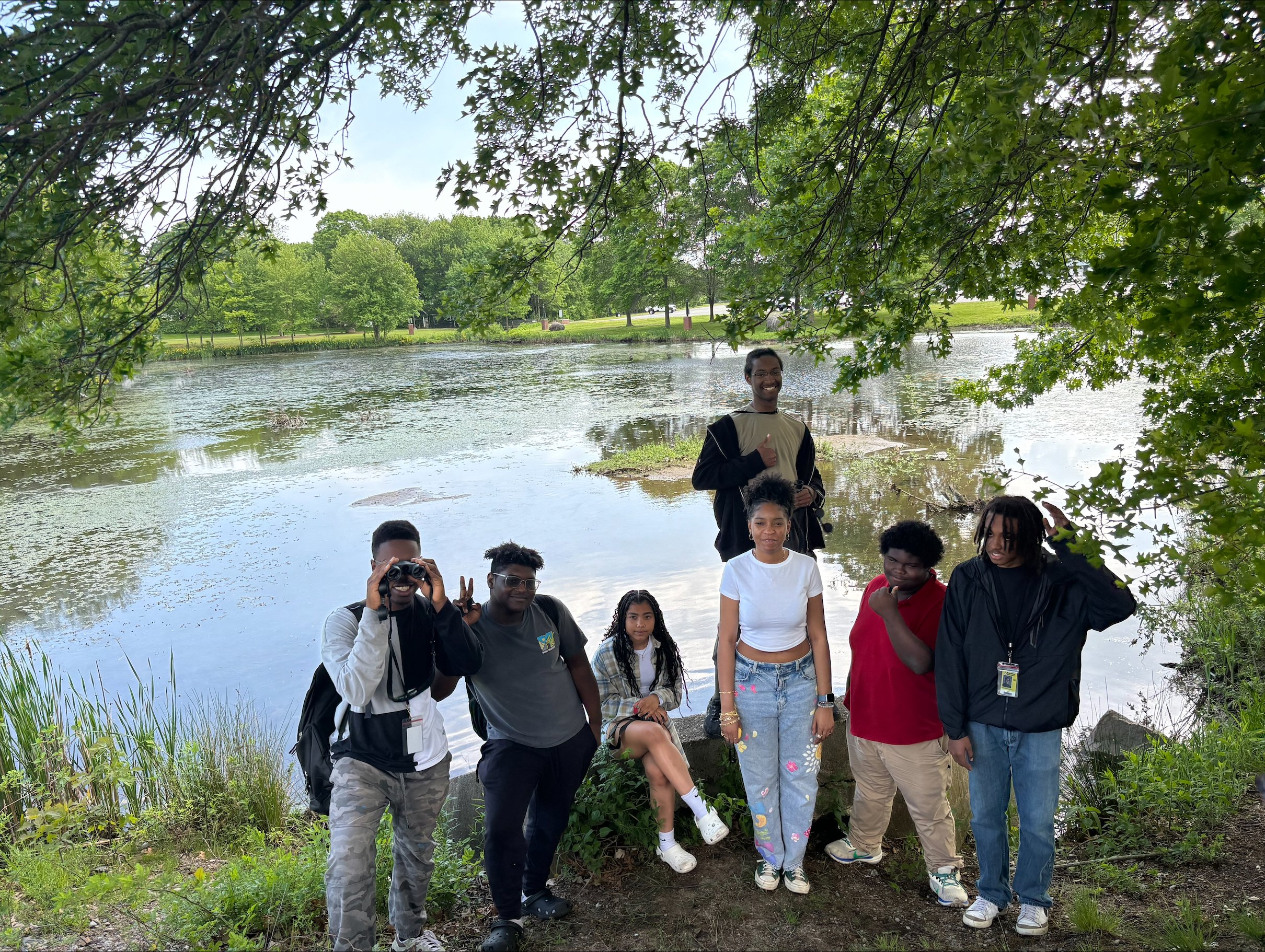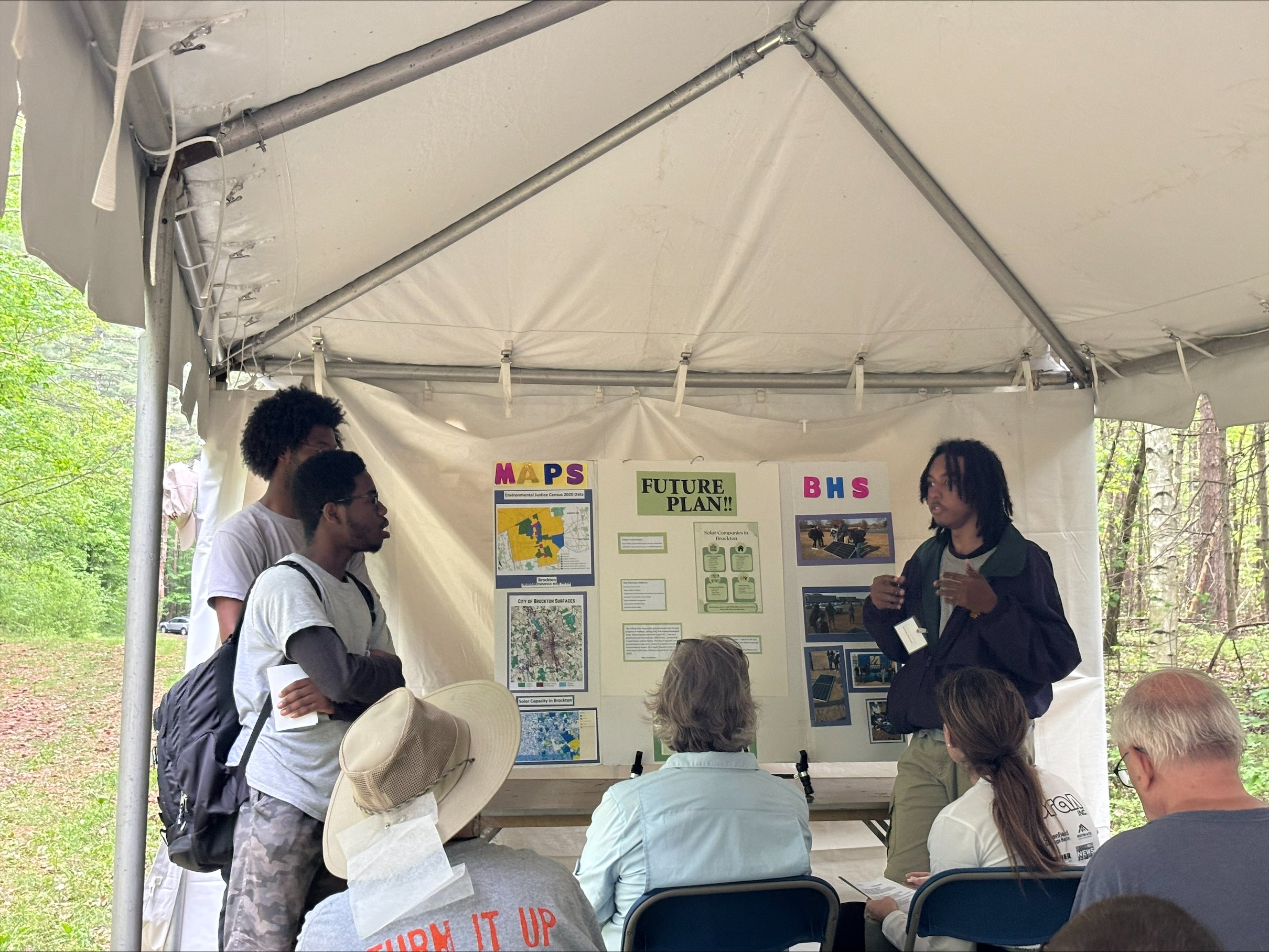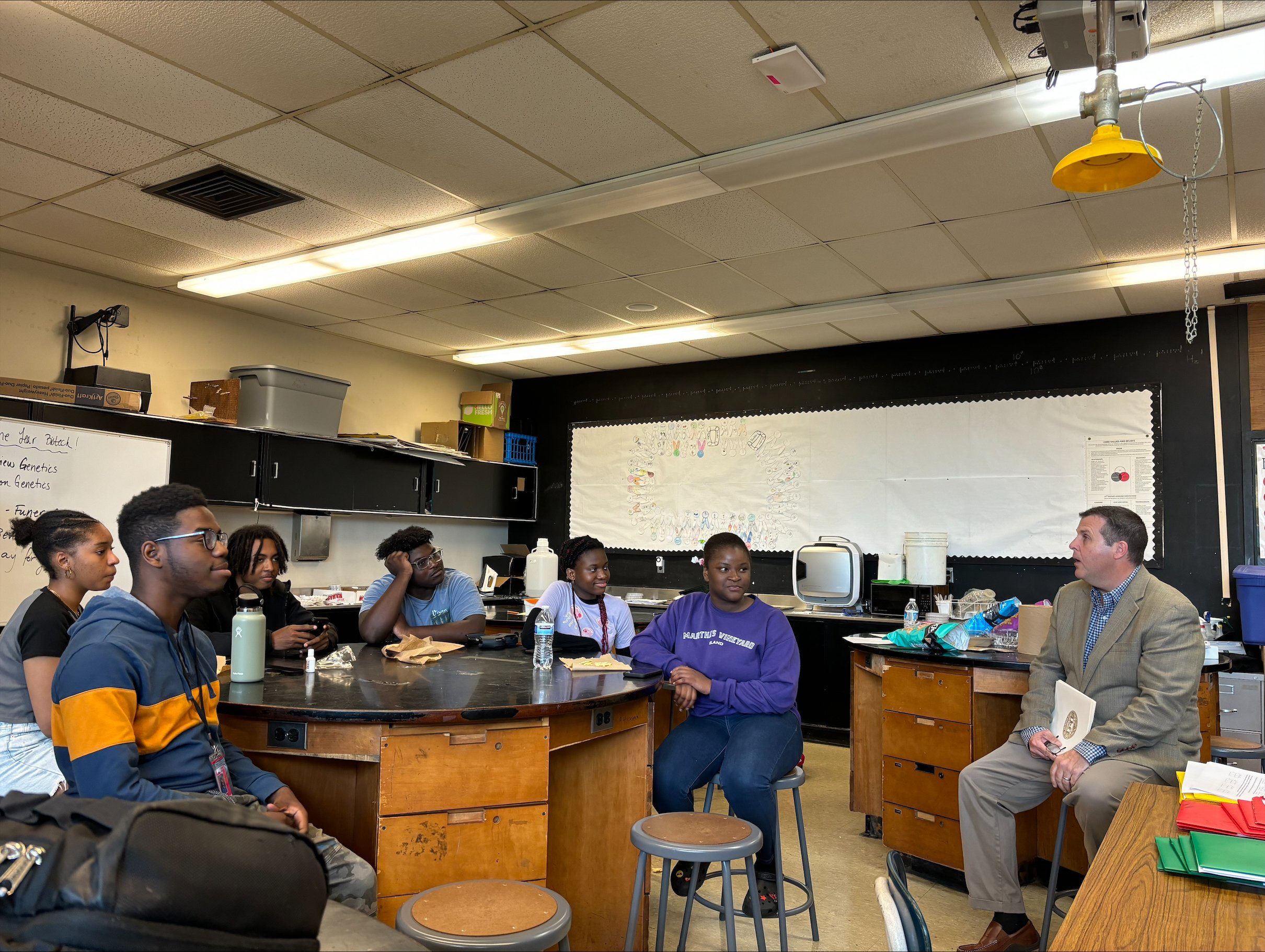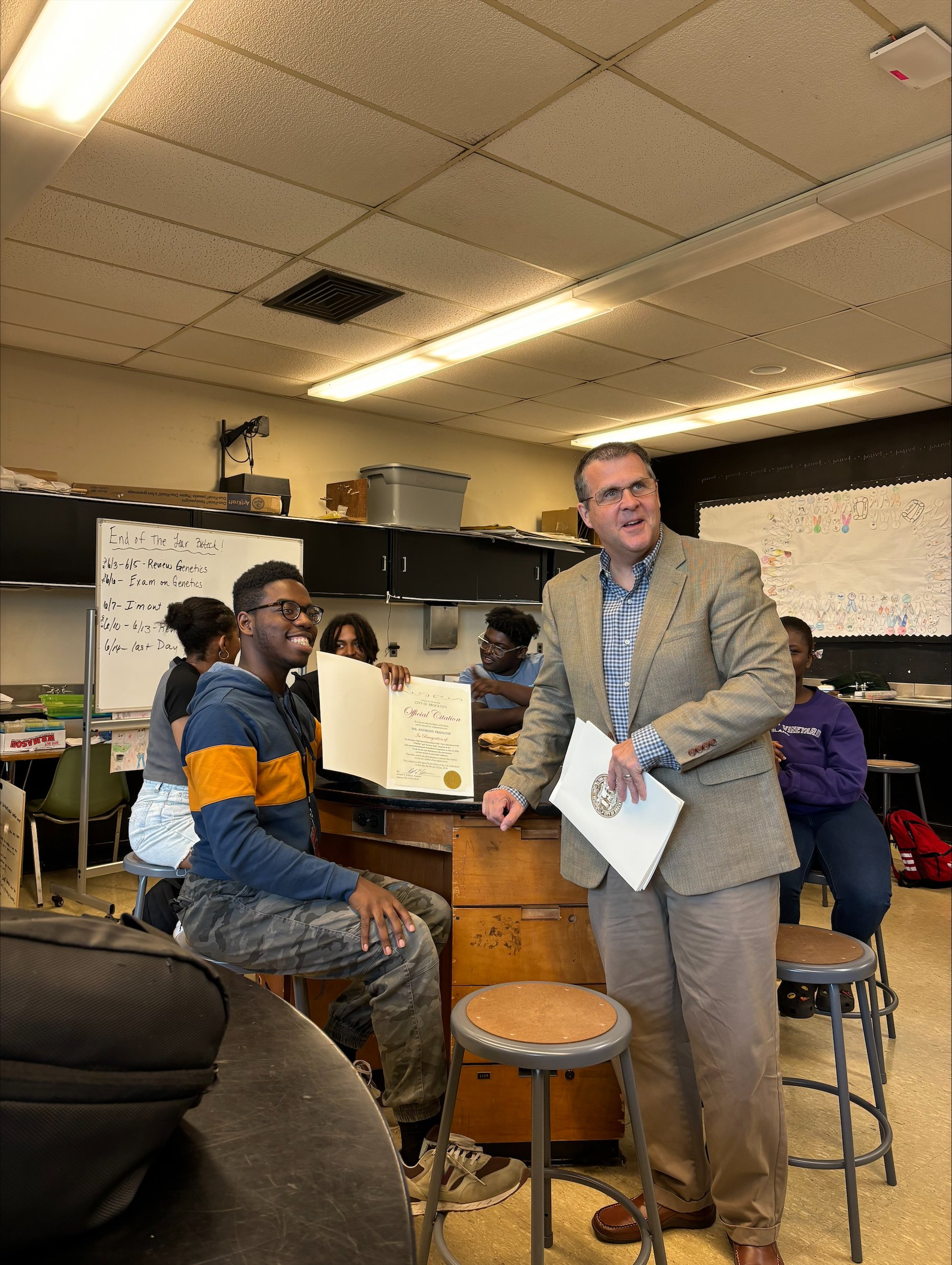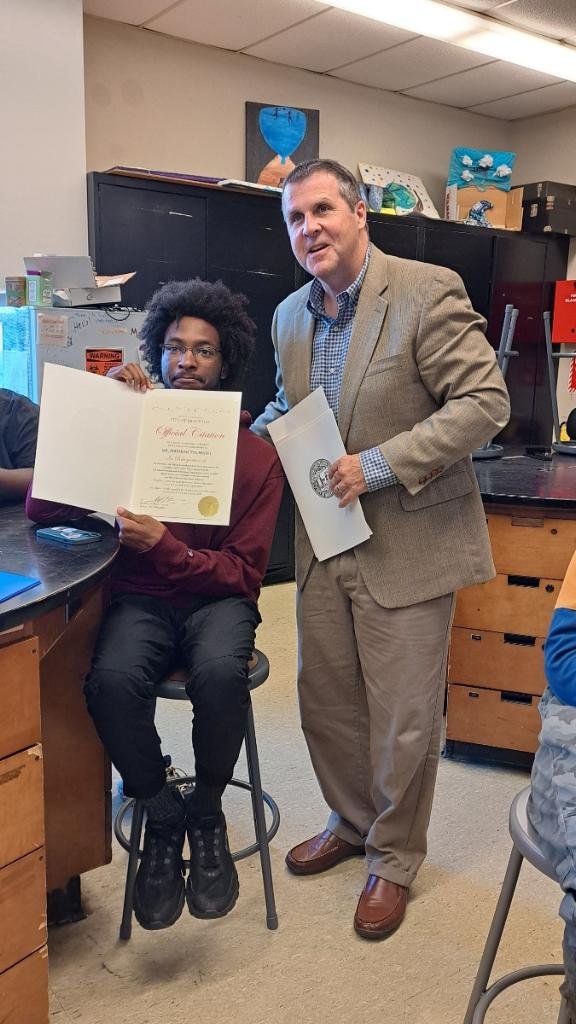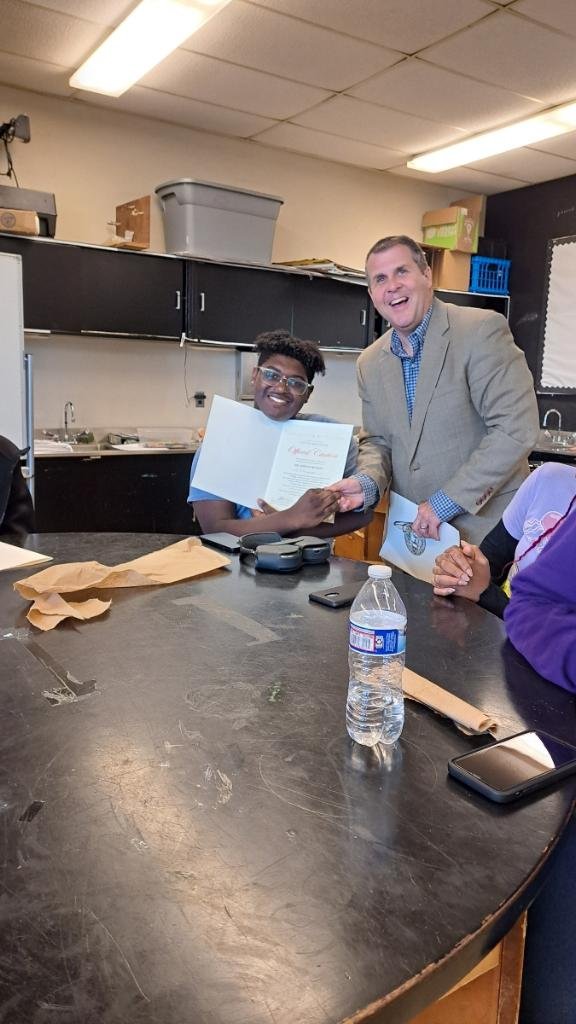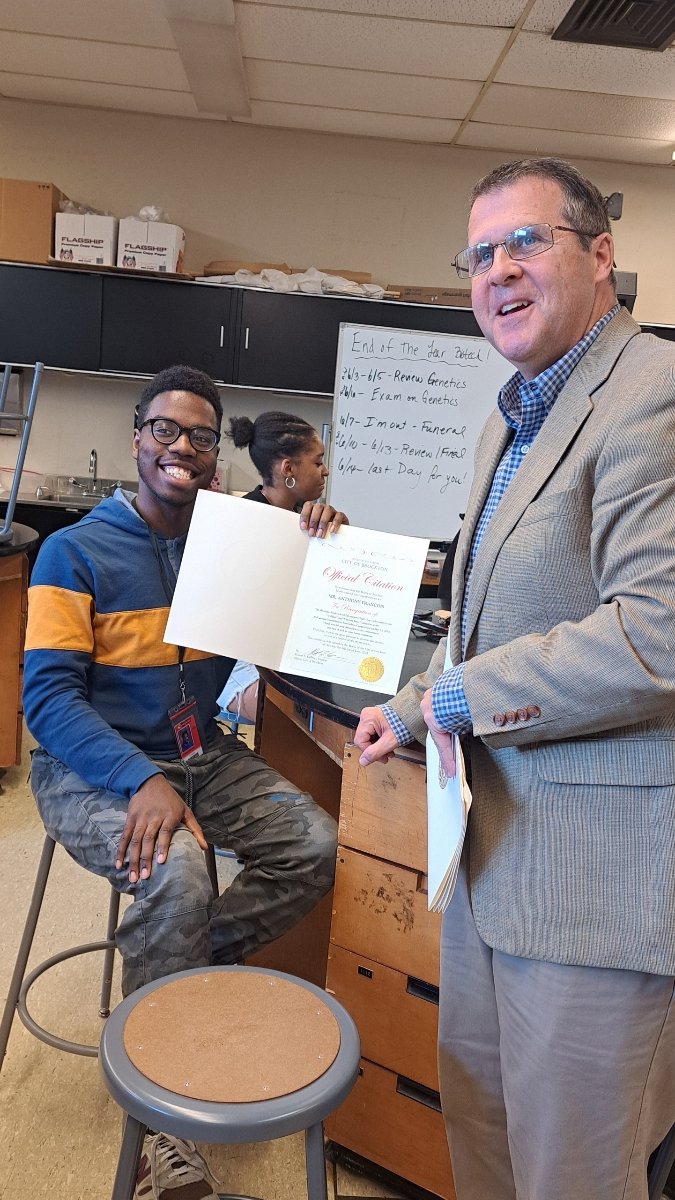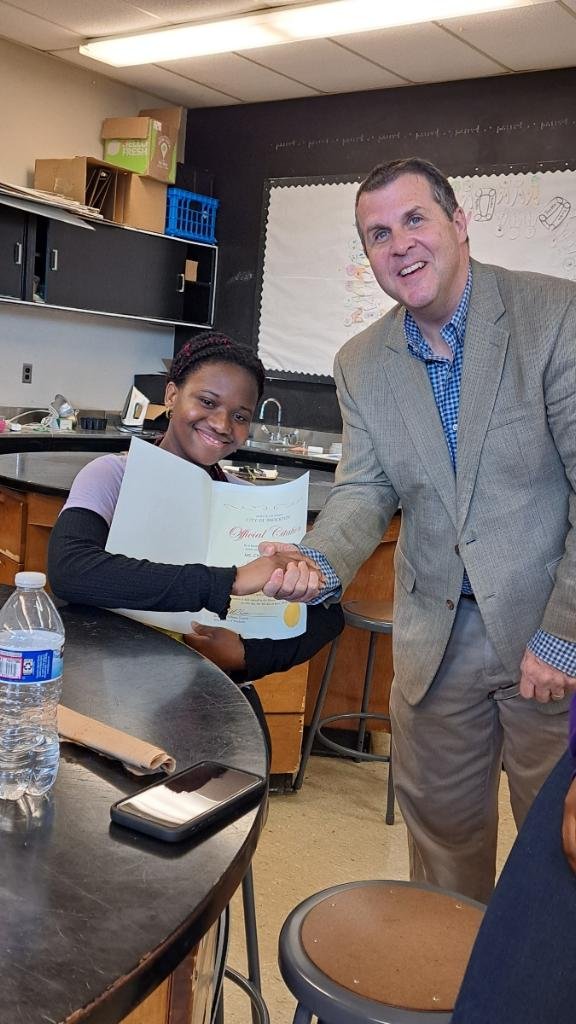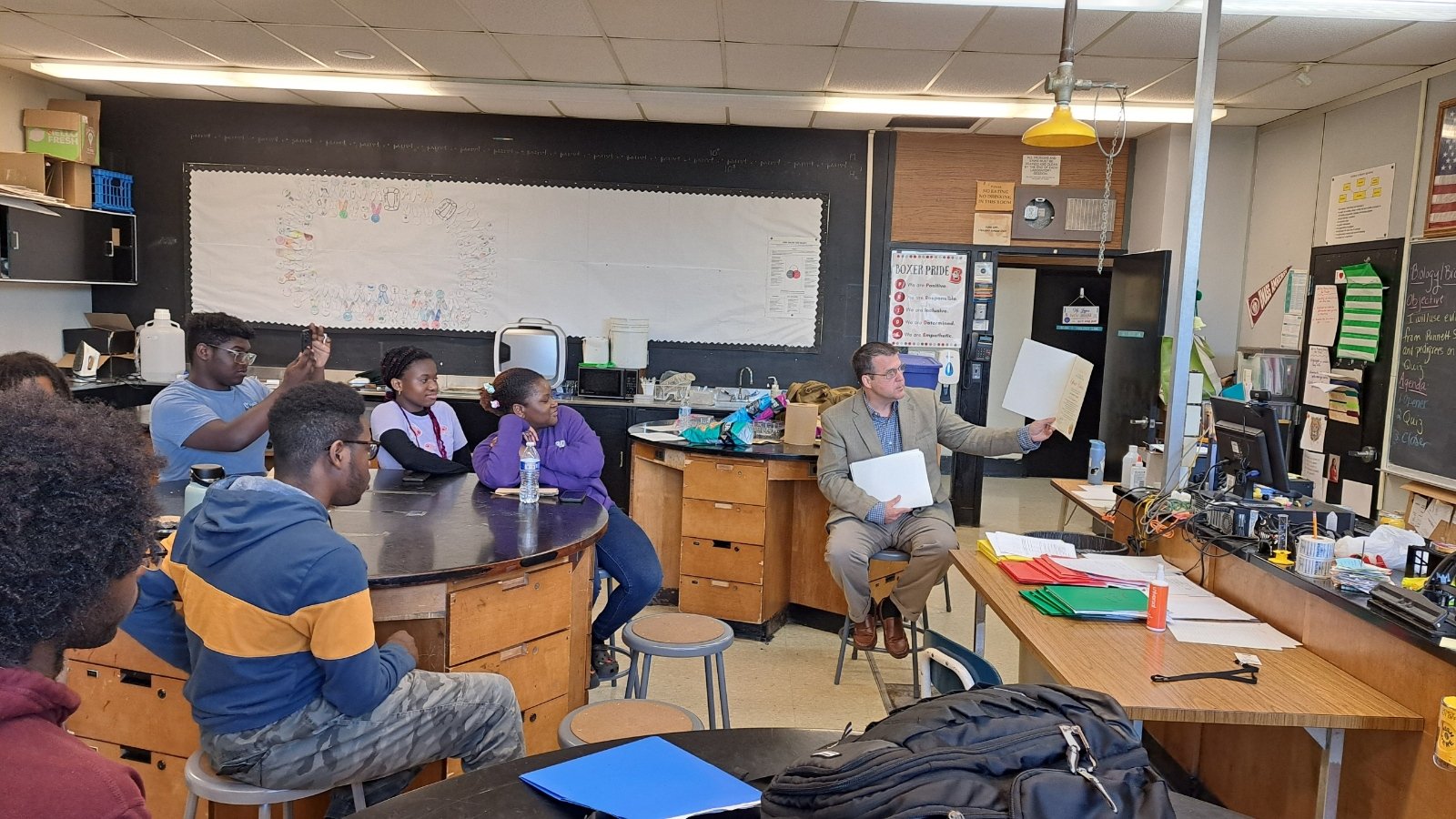Wildlands staff and volunteers at Bay Farm Conservation Area in Kingston for a Twilight Trailmasters project.
By Thomas Patti, Communications Coordinator
Amid important movements to protect greater percentages of land at the state, federal, and global scales, one truth cannot be overlooked: local nature needs local help. This summer, Wildlands Trust is helping connect conservation lands with some of the only people who can sustain them—generous neighbors.
Massachusetts is a national leader in land protection, with over 1.3 million acres off limits to development. That’s about 27 percent of the state’s area, and almost twice the land mass of Rhode Island.
But protection is only a part of the land conservation equation. To realize our vision of clean air and water, healthy soils and forests, diverse wildlife, and vibrant outdoor recreation, protected areas must also be monitored, managed, and maintained by watchful eyes and helping hands.
As it stands, more land in the state is protected than can be cared for by the people, organizations, and agencies that own it. Wildlands established the Stewardship Training Center in 2022 to help fill that gap. Piloted this year, our Tiered Volunteer Training Series targets those who will have to be a key part of the solution: neighbors who care.
Volunteers built 200 feet of bog boards at Bay Farm Conservation Area in Kingston. Photo by Janine Anderson.
“Many local residents are eager to give back to the nature around them,” said Erik Boyer, Wildlands’ Director of Stewardship. “At the same time, towns and cities need help to maintain their conservation lands. Given municipal staffing constraints, connecting volunteers with their local conservation departments is harder than it seems, but it is a crucial task that Wildlands is well-positioned to take on.”
Enter Twilight Trailmasters, a summer volunteer series that serves two primary purposes: giving Tier 1 participants hands-on experience in the stewardship skills they learned this winter and spring, and fostering relationships between willing volunteers and conservation authorities in their towns. Over five evenings this summer, volunteers are completing stewardship projects in Kingston, Plymouth, Hanover, Marshfield, and Rockland.
On June 24, our first Twilight Trailmasters project gathered six volunteers at Bay Farm Conservation Area, managed jointly by the Towns of Kingston and Duxbury. They built 200 feet of bog boards on portions of the Kingston trail system that overlap with the Bay Circuit Trail. The wood was generously donated by Buz Artiano of BuildX, a Hanover-based building firm.
“It’s fitting that this volunteer series began in such a culturally and ecologically significant place,” said Wildlands President Karen Grey. The Bay Farm field was cleared in 1627, making it one of the oldest in the country. “There are many properties in our region like this, that we don’t own, but need our help. Our commitment to land stewardship goes well beyond our own lands.”
Bay Farm Conservation Area in Kingston and Duxbury. Photo by Janine Anderson.
Last summer, Wildlands hosted a focus group of towns and cities in our region to determine how the Stewardship Training Center can best prepare volunteers to contribute to municipal conservation efforts. In addition to specific skills that were taught through the Tier 1 training, such as first aid and trail maintenance, municipalities voiced a need for volunteer leadership—that is, volunteers to manage other volunteers.
“Identifying and developing those leaders who can rally their communities around the importance of local land conservation goes a long way toward creating sustainable volunteer bases in the towns and cities we serve,” said Erik Boyer. “We are excited to continue this effort this summer and beyond.”
For more information about Twilight Trailmasters and other upcoming volunteer opportunities, join our volunteer email list at wildlandstrust.org/volunteer.

